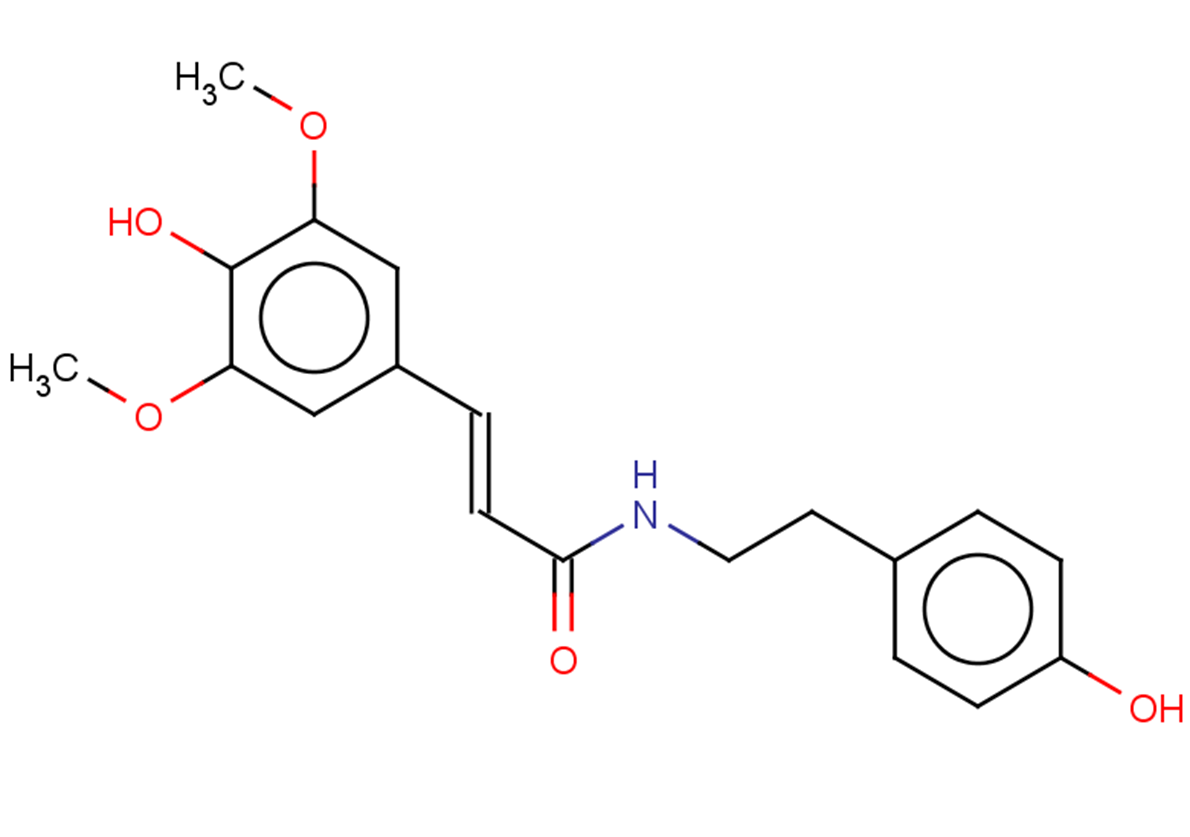
N-trans-Sinapoyltyramine
CAS No. 200125-11-7
N-trans-Sinapoyltyramine( —— )
Catalog No. M23901 CAS No. 200125-11-7
N-trans-Sinapoyltyramine exhibited strong and selective cytotoxicity on the HeLa human cancer cell line with IC50 values of 9.77 ± 1.25 Μm.
Purity : >98% (HPLC)
 COA
COA
 Datasheet
Datasheet
 HNMR
HNMR
 HPLC
HPLC
 MSDS
MSDS
 Handing Instructions
Handing Instructions
| Size | Price / USD | Stock | Quantity |
| 5MG | 558 | In Stock |


|
| 10MG | 794 | In Stock |


|
| 25MG | 1197 | In Stock |


|
| 50MG | 1602 | In Stock |


|
| 100MG | Get Quote | In Stock |


|
| 200MG | Get Quote | In Stock |


|
| 500MG | Get Quote | In Stock |


|
| 1G | Get Quote | In Stock |


|
Biological Information
-
Product NameN-trans-Sinapoyltyramine
-
NoteResearch use only, not for human use.
-
Brief DescriptionN-trans-Sinapoyltyramine exhibited strong and selective cytotoxicity on the HeLa human cancer cell line with IC50 values of 9.77 ± 1.25 Μm.
-
DescriptionN-trans-Sinapoyltyramine exhibited strong and selective cytotoxicity on the HeLa human cancer cell line with IC50 values of 9.77 ± 1.25 Μm.
-
In Vitro——
-
In Vivo——
-
Synonyms——
-
PathwayOthers
-
TargetOther Targets
-
RecptorOthers
-
Research Area——
-
Indication——
Chemical Information
-
CAS Number200125-11-7
-
Formula Weight343.37
-
Molecular FormulaC19H21NO5
-
Purity>98% (HPLC)
-
Solubility——
-
SMILESCOc1cc(/C=C/C(NCCc(cc2)ccc2O)=O)cc(OC)c1O
-
Chemical Name——
Shipping & Storage Information
-
Storage(-20℃)
-
ShippingWith Ice Pack
-
Stability≥ 2 years
Reference
1.Truong LH, et al. Cytotoxic constituents from Isotrema tadungense. J Asian Nat Prod Res. 2021 May;23(5):491-497.
molnova catalog



related products
-
DL-Menthol
DL-Menthol has short term toxicity in rats, it plays a role in the induction of surgical anesthesia in fishes, related at least in part to the activation of GABAA receptors.
-
lufenuron
Lufenuron is a lipophilic benzoylurea insecticide and a?chitin synthesis?inhibitor that can used for flea and fish lice control. Lufenuron inhibits moulting of arthropods.
-
20-O-Acetylingenol-3...
20-O-Acetylingenol-3-angelate is a natural compound from Euphorbia lathyris L.



 Cart
Cart
 sales@molnova.com
sales@molnova.com


